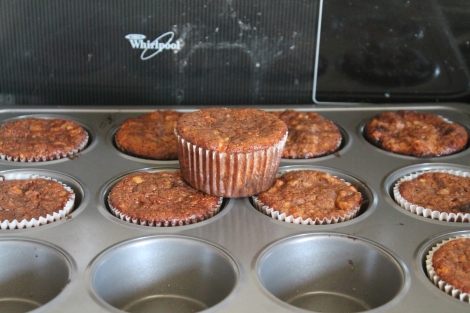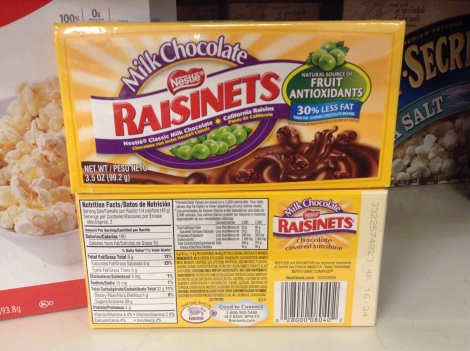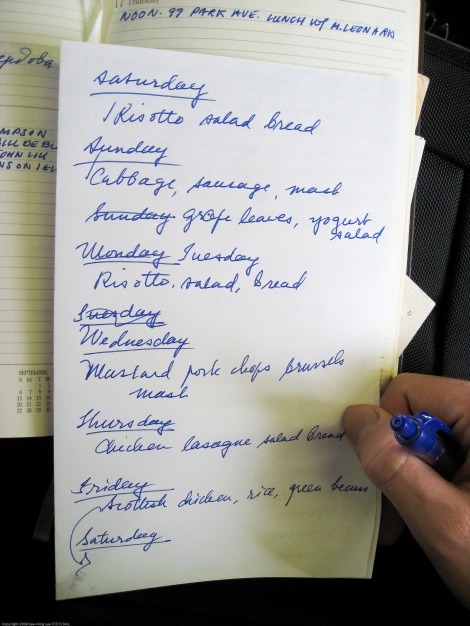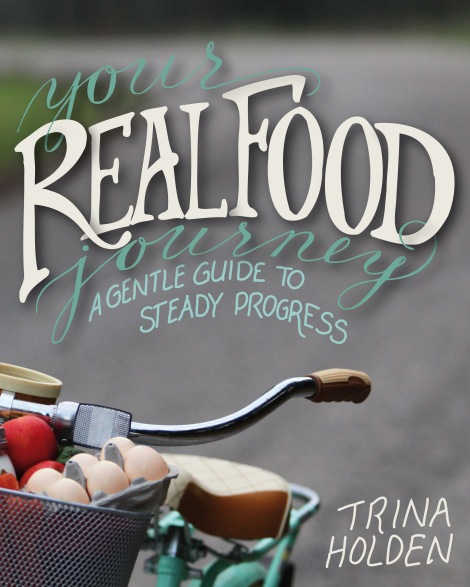I’m working my way through Trina Holden’s book and making changes and adjustments to our lifestyle accordingly. I see all of this through the lens of a child with food allergies (dairy and peanuts) and my own pursuit of a diabetes friendly lifestyle to prevent my developing diabetes in the future. I’m not going to go through every chapter of the book, but I am going to hit my favorite parts and mention how it has changed my eating. (I say my because making this a family affair is still a process).
Photo Credit: JeepersMedia via Compfight cc
Getting Rid of Stuff You Can’t Pronounce.
OK, I’ve mostly done this. I guess I could substitute homemade cookies and granola bars for Kashi bars and organic animal cookies. I can work on that. I also know that the alternative milks we purchase probably have unhealthy ingredients in them. I regularly make homemade soy yogurt and my son drinks almond as well. Both are made with manufactured milk, but the yogurt is much cheaper than the store bought yogurt. Neither turned out the way I wanted so I’m going to keep doing my research and look for good solutions.
For me, getting rid of stuff I can’t pronounce means making almost everything from scratch, which is exhausting. This is something I used to do when my daughter was young, but with two little ones running around and starting homeschooling next year, I don’t know if we’d still eat if I had to make absolutely everything from scratch. But I am becoming more mindful of what we put into our bodies. My ideal is that everything we eat be as close to its natural form as possible. So fruits and veggies are better if locally grown (sometimes even backyard grown) and if not organic is preferable. But sometimes the organic cost is too much for our budget. The way my kids go through strawberries in the summer and eggs all year round we would spend our budget just on those two things. But I remind myself that a conventional strawberry is still better than potato chips and a soda.
Photo Credit: See-ming Lee 李思明 SML via Compfight cc
Having a Menu Plan That Works for You
Yeah! Menu plans are not new to me. I used to try and make a month’s worth at once, but that didn’t work. Lately I waffle between doing a week or a few days at a time. Usually I start with, what I can I make with what I have? Then what do we want to have next week, before I hit the grocery store, usually on a weekend. Grocery shopping has become a complicated affair around here. The store we buy most of our organic and specialty products from is a little further away so we only get there once a month. So there are certain items we need to buy there, or wait until next time. Then we hit the local Sam’s Club and discount grocery story Bottom Dollar almost every week. Sometimes just to pick up $.97 a lb peaches, and butter (they have the cheapest price in town) or Sam’s Club for Greek yogurt cups for my husband’s lunch.
Photo Credit: Robert S. Donovan via Compfight cc
Embracing Good Fats
Ok, this is something that we’ve already started doing at our house. I love using butter and I would use it for everything except . . . my son has a dairy allergy. So I can bake with butter, since the heat helps break down the milk proteins but I can’t cook with it, yet. So my go to choice has always been olive oil. But now I’m wondering what I should do instead? When I emailed Trina she suggested I try refined coconut oil. I tried making eggs with extra virgin coconut oil once and it made me nauseous. I don’t mind baking with coconut oil, though I do notice a significant texture change and sometimes there is still the slightest flavor of coconut which is OK, but gets boring after a while.
I’ve always cooked with olive oil. No one in our family has ever had gall bladder problems that we know of, but I can see her point. I’m going to try refined coconut oil, but if it really doesn’t fly with my family, I’ll keep using olive oil, but I bake almost exclusively with butter. Sometimes compromises are necessary. I have started using bacon grease for making our regular morning eggs and so far it’s very tasty.
Photo Credit: paul+photos=moody via Compfight cc
Best Dairy for Your Family
I’ll start right now by saying I don’t believe in raw milk. Sorry. Unless I milk the cow myself, and even then there is no guarantee the cow hasn’t been colonized with listeria or e-coli. But I also understand the theory behind why homogenization destroys some of the healthy parts of milk. This is the first time I’ve ever seen a compromise mentioned. Low temp pasturized milk or milk that is pasturized but not homogenized. However, my husband and I disagree strongly about this. He believes in getting milk like God intended, in a paper carton or plastic jug from the grocery store. (I suspect he feels similarly about his meat arriving in plastic). I decided it wasn’t worth the marriage, so I have mostly let this go. Though I still feel curious about what non-homogenized milk is really like.
My son drinks protein enriched almond milk. I recognize that this is not a great choice. But I do still worry about getting him enough calcium and protein and this makes me feel a little better. I recently started making my own yogurt again and I’m experimenting with making soy yogurt with Silk. Yes, I know, soy is evil. But for me half the point of yogurt is as a healthy protein source, which it isn’t if you use anything but soy or regular milk. But at least Silk is non-GMO and organic. When I don’t have time to make yogurt, my kids and I eat Stonyfield Farm. I’m open to other possibilities however including making yogurt with homemade almond milk. It won’t have the same protein content, but at least I’ll know exactly what is in it.
I’m reminded again how different prices are in different areas of the country. Trina says she pays $5 a gallon for store bought organic milk. Ha! I pay more than $4 a gallon for conventional milk, try almost double for organic Typically, I buy a gallon of skim milk and a gallon of whole. But I’m transitioning to only whole. Mostly because I don’t drink much milk unless it’s with a baked good, which has also become rarer. We also use it to make homemade ice cream, which I love. But for some new challenges, I have started making my own yogurt again and I’m willing to try kefir and even separate whey from my yogurt to make other yummy things. Again, sometimes compromise is necessary to satisfy both budget and relationships with those you love. It sounds good to me.
My Real Food Journey, Guided by Trina Holden
Disclaimer: I received this book for free in order to review it. But my opinions are my own. However, this post may also contain affiliate links. Thanks for your support.














Leave a Comment